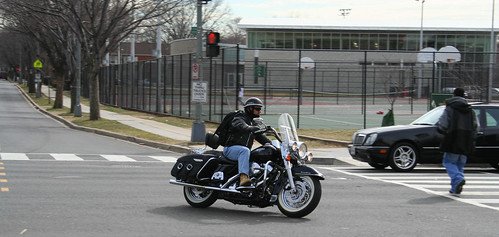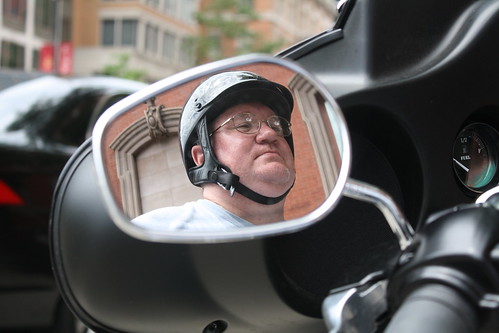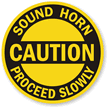The SEE system for motorcycle safety
Riding a motorcycle may be a cheaper, less boring alternative to driving a car, but there is still a heavy price to pay. The National Highway Traffic Safety Administration (NHTSA) estimated that “per vehicle mile traveled in 2006, motorcyclists were 35 times more likely than passenger car occupants to die in a motor vehicle traffic crash and 8 times more likely to be injured.”

A motorcyclist on the road. Image by Elvet Barnes
There are several reasons why that may be true. Cars and truck drivers often simply do not see motorcycles due to their smaller profiles, and when they do, tend not to yield the right of way. Recent relaxation in helmet laws has also worsened the injuries caused to motorcyclists.
Experts believe that although external factors are to blame for motorcyclists’ miseries, riders need to watch out for themselves without relying too much on others’ behavior on the road. The Motorcycle Safety Federation (MSF) is on the case with plenty of advice.
The non-profit organization has developed a SEE system for “managing the many risks riders face.” The MSF’s SEE system stands for “Search, Evaluate, and Execute.” By using this system, motorcyclists can see, judge, and respond to the road and traffic in a more efficient manner.
Search
The first step is to visually recognize things that can affect your safety and control. You need to keep a constant eye out for:
- Traffic control markings and devices
- Surface conditions and road characteristics
- Other road users.
You should look out for what’s right in front of you, what’s 12 seconds ahead, and what’s around you. You can do all of these by scanning your mirrors, looking side to side, and swiveling your head to check blind spots and when you change lanes.

Scan your mirror to see what’s around you. Image by Elvert Barnes
Evaluate
Next, this visual information needs to be processed cognitively. MSF suggests, “To get the best results, predict the worst possible outcome.” Under the SEE system, evaluate the three categories you looked out for in your search like this:
- Traffic control markings and devices: All roadway users may not obey these, so be prepared for the potential hazards you might have to suddenly face.
- Surface conditions and road characteristics: Note the kind of road you’re on and the quality of the pavement. Mentally mark the signs, guardrails, posts, and other objects you could crash into.
- Other road users: You need to become adept in anticipating other drivers’ potential errors in judgment so that you can be ready to take corrective measures.
Execute
Here’s where your motor skills come into play. Once you’ve searched for and evaluated risks, it’s time to react quickly. For instance, imagine a driver on a cell phone isn’t looking and is turning in front of you at an intersection. You have a few choices:
- Communicate: You could honk or wave. This is a passive reaction, because you want the other driver to respond.
- Adjust speed: Can you slow down and let the driver turn in front of you?
- Adjust position: Is it possible for you to steer around the car that is turning?
Motorcycle.com states, “While the SEE system is broken out into steps, in real life your focus and the resulting action should be fluid. To become proficient, these steps need to be practiced and integrated into your mind.”
Category: Motorcycles



















Comments (1)
Sites That Link to this Post